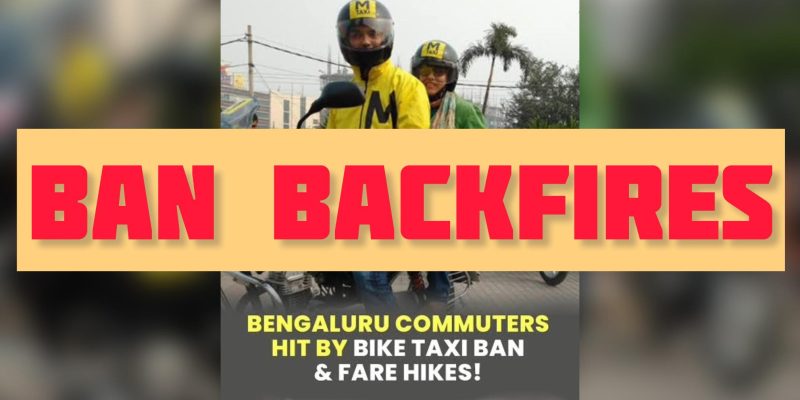In a city that prides itself on innovation, Bengaluru’s sudden ban on bike taxis has caused a regressive ripple. What was intended as a move to bring clarity and control to urban transport has instead triggered chaos: congested roads, surging fares, and economic blowback.
On June 15, 2025, Karnataka’s High Court upheld a long-debated ban on bike taxis—apps like Rapido, Ola Bike, and Uber Moto were told to stop operations with immediate effect. The official reason: bike taxis lacked commercial vehicle permits, appropriate insurance coverage, and regulatory safeguards. But the impact on the ground has been far from orderly.
🚦 Traffic Turmoil in Tech City
The withdrawal of thousands of bike taxis from Bengaluru’s roads left a gaping hole in the city’s already stretched mobility system. Bike taxis were the go-to option for short, fast, and affordable rides—especially in congested areas like Whitefield, Indiranagar, Koramangala, and Electronic City.
Now, without them, commuters have no choice but to rely on autos, cabs, and personal vehicles. Result? Road congestion has reached new highs. Commute times have reportedly doubled or tripled on key corridors. Areas that previously saw swift bike traffic are now bottlenecked with bulky autos and cars.
“Getting from HSR to Marathahalli used to take me 20 minutes on a Rapido. Now it’s almost an hour in an auto,” says Ankur Sharma, a software engineer. “And that too at twice the cost.”
💸 Auto & Cab Fares Go Through the Roof
One of the most immediate side effects of the ban has been a steep rise in autorickshaw and cab fares. With demand spilling over, autos have begun charging premium rates—often without meters.
A short 4 km ride that cost ₹60–₹80 on a bike taxi is now ₹150 or more in an auto. Cab fares have seen similar inflation, especially during peak hours or rain.
Social media platforms like X and Reddit have been flooded with complaints. One user posted, “₹180 for a 4 km auto ride in Bengaluru today. The bike taxi ban is nothing short of a disaster for the common commuter.”
MP P.C. Mohan even issued a public appeal for fare regulation, warning that aggregators and auto unions are using the situation to hike rates without oversight.
🚫 Gig Workers Left in the Lurch
The ban has also hit the livelihoods of over 120,000 bike taxi riders in Karnataka—many of them students, daily-wage workers, and part-time earners.
“I used to earn ₹800–1,000 a day doing bike rides in the morning and evening,” says Sharath, a 24-year-old Rapido rider. “Now my bike is just parked at home. There’s no alternative job I can take up that quickly.”
Some riders are switching to delivery apps, while others are using personal bikes to ferry customers informally—risking fines and seizure.
📉 Broader Impact on the Economy
Transport experts say the loss of bike taxis is more than just an inconvenience—it’s a hit to productivity and equity. Longer commutes mean less working time, more stress, and lower output, particularly for the city’s massive tech workforce.
Low-income users—who relied on bike taxis for affordable commuting—are now being priced out of basic mobility. A daily extra expense of ₹100–₹200 is untenable for many.
The government too is losing potential revenue. Had bike taxis been regulated with commercial licenses and tax slabs, the estimated revenue could have crossed ₹80 crore annually.
⚖️ Regulation vs. Prohibition
Voices are now rising for reform instead of restriction. Urban policy experts, tech professionals, and commuters are calling for a framework to regulate bike taxis—with safety checks, insurance, and rider training—rather than an outright ban.
Auto unions support the ban, citing unfair competition. But critics argue they’re now capitalizing on the vacuum to overcharge commuters.
Legal challenges are reportedly underway, with several aggregators preparing petitions for the High Court. Meanwhile, citizens and activists are urging the government to take a more balanced, long-term view.
📍 Final Word
Banning bike taxis without offering viable alternatives has hurt everyone—commuters, drivers, and the city’s traffic flow. What Bengaluru needs isn’t fewer options, but smarter ones. Until then, the city will continue to choke on its own commute.














Comments